
Customer expectations are on the rise, and customer service is evolving to meet them. Call centers are at the front lines, tackling queries around the clock. Support agents are faced with an increasingly demanding environment. How do you keep your teams agile, motivated, and efficient? With call center workforce management (WFM).
Nevertheless, even with a solid WFM strategy in place, the challenges can be multifaceted. With average employee turnover rates in call centers reaching 45%, call center workforce managers must navigate choppy waters — high agent burnout rates and health-related concerns are just two of them. On the flip side, about 49% of call centers now prioritize employee satisfaction as a top key performance indicator (KPI).
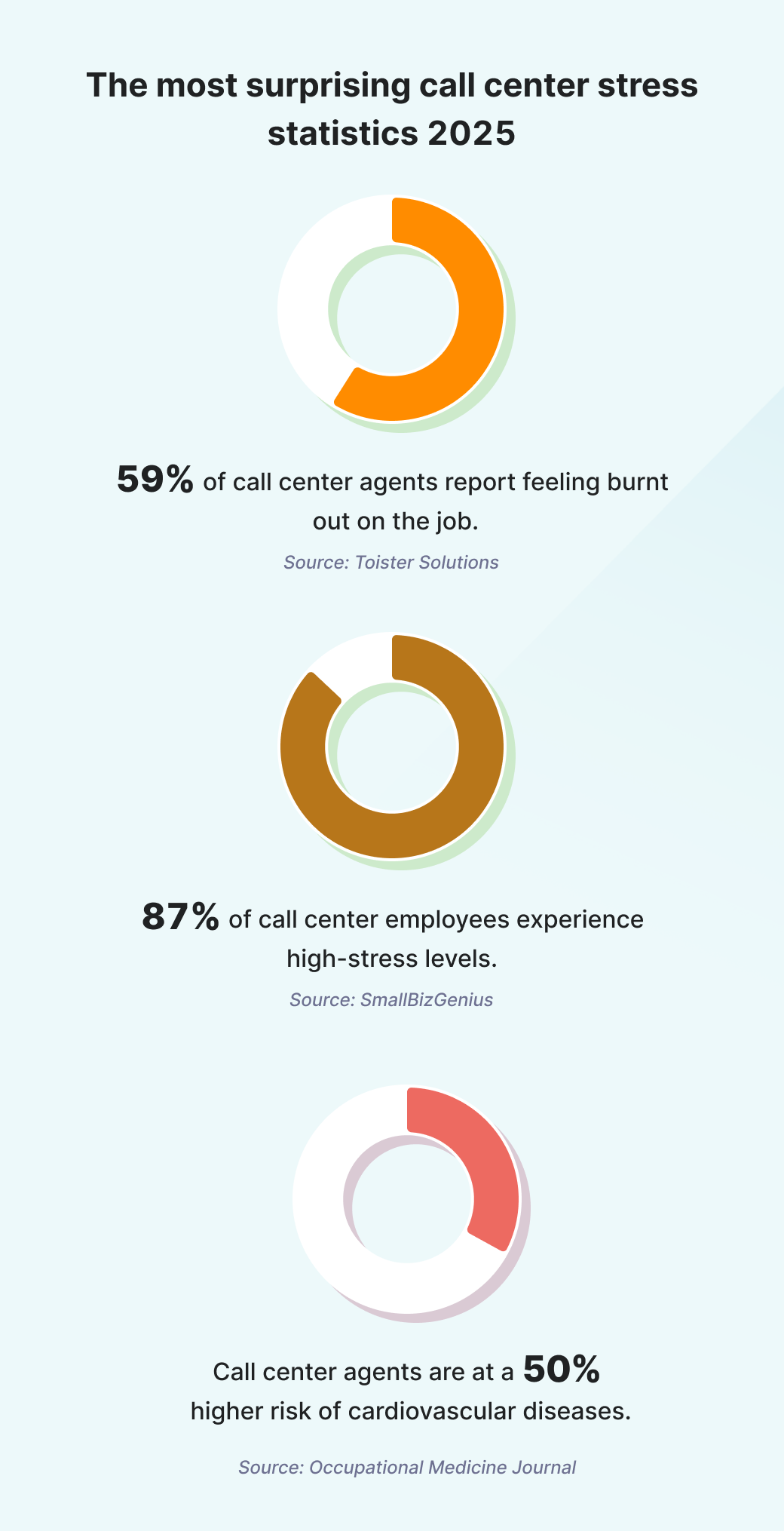
Call center workforce management serves as a strategic compass in this scenario. It empowers call centers to manage their workforce efficiently. Effective workforce management in call centers also fosters a supportive environment. This increases agent happiness and productivity, which is instrumental in improving customer service.
This article discusses:
- The importance of effective call center workforce management
- How to optimize your support team performance
- The role and responsibilities of a call center workforce manager
- Best WFM practices in light of the challenges and opportunities in this sector
- Best call center analytics to track workforce performance
- Top call center workforce management software on the market
Let’s start with the fundamental question.
What is call center workforce management?
Workforce management in a call center is an integrated set of procedures optimizing agent performance. It also helps enhance operational efficiency and customer service. The workforce management process aims at:
- Ensuring a skilled workforce is available to cover support operation hours
- Distributing workload efficiently among agents
- Maintaining a productive, motivated workforce
- Providing excellent customer service at minimum costs
The benefits of good call center workforce management
Effective workforce management in a call center brings multiple advantages.
- Accelerated handling of customer queries and issues: Quick response times are crucial for customer satisfaction. WFM ensures prompt service through efficient staffing during peak hours.
- Enhanced employee well-being: With 59% of agents at risk of burnout, effective WFM is critical in balancing workloads. Mixing experienced and less experienced agents promotes on-the-job support and boosts productivity.
- Data-driven strategies: Efficient agent scheduling backed by historical data aids in smart strategy development. It prevents wasteful overstaffing and helps meet key performance indicators.
- Increased agent satisfaction: Offering growth opportunities, such as regular training and constructive feedback, fosters agent satisfaction. This translates directly into improved productivity for 80% of call center employees.
- Increased return on investment (ROI): WFM helps predict optimum agent numbers and resource requirements, ensuring cost-effectiveness. Efficient operations mean fewer overheads, leading to improved profit margins.
- Achieving targets: WFM aids in achieving service level targets by optimally deploying resources. It also readies call centers for unplanned events like overtime and holiday call surges.
The challenges of call center workforce management
Managing a call center workforce is taxing. It has to cater to the persistent demands for quick customer support. It also has to handle the intricate dynamics between managers and agents. Several challenges come to the forefront.
- Hard-to-forecast workload demands: Call center managers often face unexpected workload surges, which are largely driven by external factors beyond their control.
- Around-the-clock operational requirements: The need to serve customers necessitates shifts, rotation, and constant vigilance to ensure seamless service delivery.
- Using manual spreadsheets: Depending on traditional, manual spreadsheets to handle administrative tasks like shift scheduling can lead to errors, oversights, and inefficiencies.
- Excessive absenteeism: Unexpected absences and disengagement disrupt the workflow and place an additional burden on present agents.
- Staff attrition: Call center agents face increased levels of stress on the job. Recruitment and training become ongoing processes, straining resources and impairing performance.
- Ensuring agents adhere to their shifts and breaks: It’s an ongoing challenge to keep track of when agents clock in and out.
- Financial restrictions: Limited budgets can impede the procurement of necessary resources and tools and hamper workforce expansion.
- Communication gaps with upper management: A disconnect between agents and managers can create a perception gap. This can make agents feel isolated and undervalued.
- Balancing customer expectations: Handling a wide array of questions and issues from customers requires effective, skill-based task distribution. WFM must ensure customers receive prompt and accurate service while managing limited resources.
- Adapting to technological changes: The continuous evolution of technology requires agents and management to stay updated.
The tasks of call center workforce management
WFM aims to balance the needs of both the business and its employees. Here’s a closer look at the essential responsibilities involved.
Forecasting interaction volumes
This process involves predicting the volume of incoming customer interactions over various intervals, such as days or weeks.
WFM teams use a mix of historical data, expert knowledge, and forecasting software. The ultimate goal is to identify patterns and trends.
Creating agent schedules
Based on forecasted demand, WFM teams devise optimal agent schedules. These align the right number of agents with the necessary skills for shifts that match expected call volumes.
Agent scheduling aims to ensure that the right number of agents are available to handle the predicted volume. It balances service levels, cost efficiency, and employee satisfaction.
Assigning agents to schedules
Upon preparing the schedules, the WFM team assigns them to agents.
Striking a balance between agent preferences and the business’s operational rules ensures that the right agent is available for the right task.
Managing intraday activities
Real-time events can disrupt planned schedules. Unexpected spikes in call volume or agent absenteeism are among these occurrences.
Intraday management involves dynamically adjusting to such changes to ensure consistent service levels.
Managing performance
Call centers monitor key metrics to assess agent performance. These insights guide training and feedback, fostering continuous performance improvement. Operation managers or WFM analysts commonly assess metrics like the ones below.
- First call resolution (FCR) rate: The rate of calls resolved in a single interaction.
- Average handling time (AHT): The typical duration for addressing customer issues.
- Occupancy rate: The time agents spend actively addressing customer concerns.
- Schedule adherence: How well agents stick to their designated schedules.
Training and skill development
Continuous agent training is essential for equipping agents with the latest skills and knowledge.
Up-to-date agent training ensures that they can efficiently handle the varying nature of customer interactions.
Call center workforce manager job description
The call center workforce manager role is pivotal in call center management. They are meant to drive optimal productivity within a multi-site, multi-skilled, 24/7 call center setup.
This role centralizes forecasting, scheduling, and intraday performance management. Its ultimate purpose is to ensure the seamless handling of inbound and outbound communications. This requires a deep understanding of call center operations and emerging industry trends.
Let’s summarize visually the key responsibilities, skills, and competencies of a call center workforce manager.
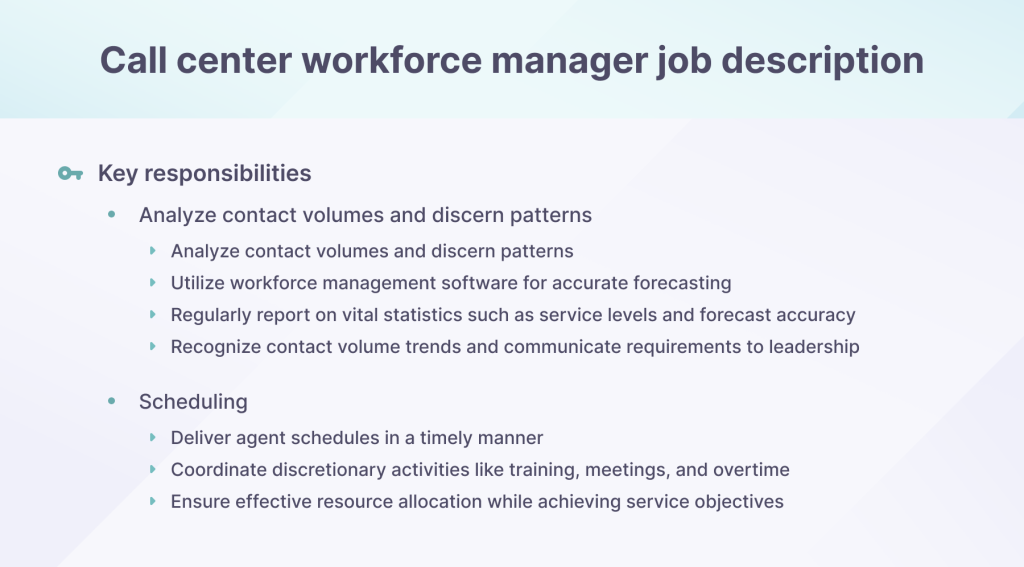
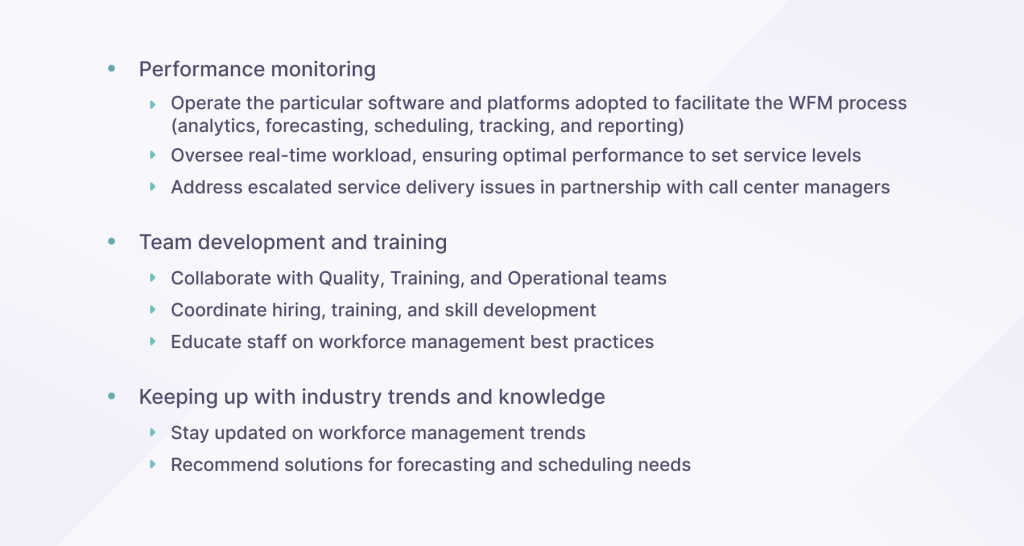
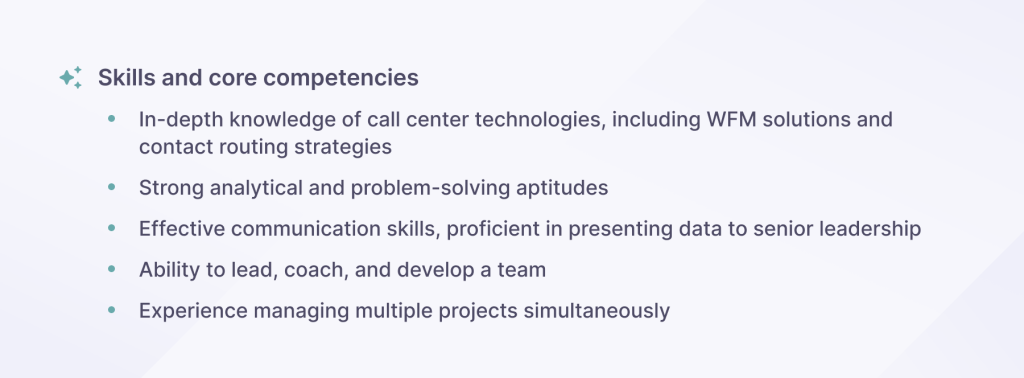
Call center workforce management best practices
Here are the best practices and essential tips to optimize your workforce management and drive outstanding results.
1. Ensure compliance with relevant regulations
Keeping your call center WFM operations compliant with all labor laws helps avoid legal repercussions. It also promotes a fair work environment where employees feel protected.
Stay updated on local and international labor laws and regulations, such as:
- Fair labor standards
- Sick leave regulations
- Medical care regulations
📜 Pro tip: Always consider employee rights when making workforce management-related decisions. Conduct compliance audits regularly.
2. Optimize the hiring and onboarding processes
Effective agent hiring is essential for getting the right candidates into your team. Ensuring a seamless onboarding process reduces ramp-up time and boosts productivity.
Take the following steps to streamline the hiring and onboarding processes:
- Identify your ideal call center agent and compile a relevant and clear job description
- Be where your potential best talents are — LinkedIn and Glassdoor
- Establish the step-by-step hiring process
- Consider partnering with recruiters
- Pre-screen candidates to select the best ones
- Design structured, comprehensive onboarding programs
Update hiring checklists and training materials to reflect current needs.
3. Facilitate cross-functional collaboration
Maintaining effective communication between call center teams ensures alignment. This strategy also helps address agents’ concerns in real time. It creates a sense of belonging and encourages cooperation. The collaboration across roles and departments enhances the holistic functionality of the call center.
Implement the following strategies to foster a culture of teamwork and collaboration in your call center:
- Schedule cross-departmental meetings
- Encourage open dialogue about WFM challenges
- Eliminate working in silos and promote inter-departmental initiatives
Incorporate tools that allow you to connect with your team on various channels so that no one is left behind. Task management software and team collaboration tools feature file sharing and easy access to all updates and documentation. Such functionalities will empower your workforce to perform more efficiently. It will also eliminate any gaps in communication.
4. Use forecasted data for optimized schedules
Utilizing forecasts ensures optimal staff alignment with expected interaction volumes. Forecasting data also helps design and optimize call center shifts, resulting in correct workforce distribution and consistent service delivery.
Regularly update schedules based on refined forecasts. Also, consider peak hours and adjust shifts accordingly.
5. Assign agents based on skills and business needs
Matching agent skills and preferences with business needs boosts morale and reduces attrition.
The following tips will help you streamline task distribution in your team:
- Consider agent strengths, weaknesses, and preferences
- Establish a culture of employee surveys and ensure employee feedback is incorporated into your WFM process
- Regularly review and adjust assignments as business needs evolve
6. Plan for the unexpected
Real-time adjustments ensure service levels are maintained despite unexpected challenges. Preparing for abrupt fluctuations in interaction demands or agent availability enhances flexibility and responsiveness in unpredictable situations.
Use real-time analytics and call center agent monitoring software to adjust your strategies accordingly.
Consider unexpected factors like sudden call volume spikes and maintain an emergency response plan. To keep it efficient, test and update it regularly.
7. Prioritize agent well-being and satisfaction
Happy agents perform better and stay longer, which is an important consideration, given the tremendous cost of agent replacement.
Promote work-life balance and mental well-being. Recognize and reward outstanding performance.
8. Build an employee self-service portal
A self-service portal empowers agents to place inquiries and take action independently. They can also obtain the necessary information when they need it. This reduces administrative overhead and ensures timely responses.
The tips below will help you make the most of an employee self-service portal:
- Design a user-friendly interface
- Consider integrating an internal knowledge base into the self-service portal — knowledge bases are effective tools for customers and employees alike
- Make sure to keep the materials updated in line with the latest innovations and features of your service or products
- Ensure easy access to the self-service portal for each agent
- Allow agents to view performance, leave feedback about the effectiveness of the self-service portal, and share their suggestions for its improvement
9. Foster a culture of continuous learning
Continuous learning equips agents with new skills, adapting to the evolving needs of the call center industry.
We found these tips to work best for creating a culture of learning and development:
- Offer regular training sessions and workshops to help keep agents updated on the latest industry practices
- Facilitate access to customer service books that provide insights and knowledge
- Encourage feedback and idea sharing to encourage innovation and boost morale
- Explore customer service podcasts for more dynamic learning
- Encourage agents to pursue customer service certifications to enhance their skills and career growth
👨🏻🏫 Pro tip: Attend customer experience conferences with your team to engage in networking opportunities and learn new strategies.
10. Share your WFM success
Sharing success stories inspires the team and showcases the value of workforce management.
Celebrate milestones and achievements. Communicate the positive impact of workforce management on the business.
11. Harness the power of technology
Modern technology solutions, from artificial intelligence (AI) to predictive analytics, can refine certain aspects of WFM. Scheduling regular upgrades and updates of your tech stack keeps the WFM process aligned with the latest technological advancements.
Adopt the following strategies to fully benefit from the available WFM solutions:
- Invest in cutting-edge tools and solutions that can streamline your call center WFM operations
- Stay updated with technological advancements in the call center industry
- Buy in your entire team to embrace technology and be transparent about the challenges and outcomes of the adoption process
- Schedule periodic system reviews and updates
- Train agents on new features and functionalities
Call center workforce performance management
Analytics and KPIs offer insights into a call center’s workforce effectiveness and areas for improvement. These metrics help workforce management stay in line with current industry trends and processes.
Ensure that you regularly review the following crucial KPIs.
First call resolution rate
First call resolution (FCR) refers to the percentage of customer issues resolved by an agent during the initial interaction over the phone. Monitoring FCR provides insights into the efficiency of your support team in solving customer queries on their first contact with the customer.
Even though self-service methods such as chatbots and information repositories assist customers in resolving minor issues autonomously, a direct conversation with an agent is often required for more intricate matters. Customers expect their concerns to be addressed promptly and competently during such interactions.
📈 A good FCR rate is between 70% and 79%.
How to calculate FCR

Average wait time
The average wait time (AWT), or average hold time, reflects the duration a caller spends unattended before connecting with an agent.
Excessive wait times can cause callers to be dissatisfied and potentially damage the company’s reputation. AWT serves as a helpful determinant for staff allocation in a call center. Measuring and analyzing this metric can identify problem areas and inform strategies to reduce waiting times.
📈 Typically, the acceptable AWT is 20 seconds. Most callers will abandon their call after 2 minutes.
How to calculate AWT

Average handling time
The average handling time (AHT) represents the mean duration an agent spends on a single interaction. It includes the wait time and the related post-call activities. By monitoring this metric, you can establish benchmarks for various call categories and define expectations for your team.
Striking a balance with this metric can be challenging. It involves the right combination of quality and speed without compromising on either.
📈 A good AHT is 6 minutes per interaction.
How to calculate AHT

Call abandonment rate
The call abandonment rate (CAR) measures the percentage of incoming calls that end before a conversation begins. It is a critical metric for call centers indicating customer frustration due to long hold times.
📈 The acceptable call abandonment rate is between 5-8%.
How to calculate CAR

Cost per call
The cost per call (CPC) is a key performance indicator that gauges the average expense related to each call an agent handles. This metric sheds light on the economic efficiency of your call center activities. It’s important for making resource distribution decisions. It also aids management in assessing whether resource allocations need modification.
📈 The accepted industry standards specify $2.70 – $5.60 as a reasonable CPC. This amount includes direct and indirect labor costs plus operational costs.
How to calculate CPC

Net promoter score
The net promoter score (NPS) is a measure of customer loyalty, focusing on long-term satisfaction. It is typically calculated through a survey sent every quarter or half-yearly.
The NPS survey poses a single question, “How likely are you to recommend this company to a friend or colleague?” It offers a scoring range from 0 to 10. It’s also crucial to include a comment section for customers to explain their scoring.
Based on their responses, customers are divided into three categories:
- Those who score a 9 or 10 are classified as Promoters: Loyal customers expected to repeat purchases and refer others
- Those who rate a 7 or 8 are labeled as Passives: They are content with your brand but might be drawn away by competitors
- Customers who rate 6 or below are Detractors: These customers are dissatisfied and could potentially disseminate negative feedback about your product or service
📈 A score of more than 50 is good for call centers. It suggests that promoters outnumber detractors by 50%.
How to calculate NPS

Customer satisfaction
Customer satisfaction (CSAT) is a performance metric that indicates the percentage of customers whose needs and expectations were met by your call center. It’s the ultimate evaluation of your effectiveness in fulfilling callers’ expectations.
To determine the CSAT, you’ll need to conduct customer satisfaction surveys. You can use questions like:
- “Were you satisfied with your interaction with our agent? (Yes/No)”
- “How would you assess your satisfaction with your interaction with our agent? (Very satisfied/Somewhat satisfied/Unsatisfied)”
- “How satisfied are you with your interaction with our agent on a scale of 1–10?”
📈 An acceptable CSAT score exceeds 25%.
How to calculate CSAT

Workforce management software for call centers
As call centers strive to meet the ever-increasing expectations of both clients and their staff, adopting robust workforce management solutions becomes indispensable.
Here is a list of top call center workforce management software from industry experts.
Talkdesk
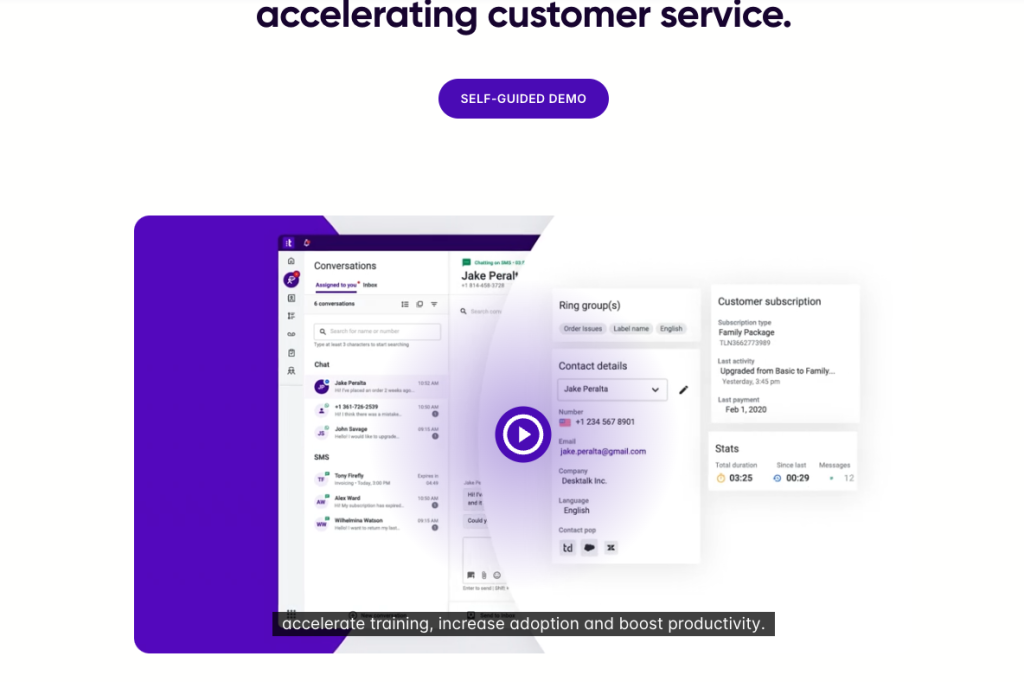
Image source: talkdesk.com
Talkdesk’s workforce solution includes intelligent forecasting, automated scheduling, and personalized agent coaching. Its simplified dashboard offers real-time insights and supports omnichannel communication. The mobile app and agent request chatbot provide agents with 24-hour access to their schedules and support.
💰 Pricing: Plans start from $85 per user per month
Five9
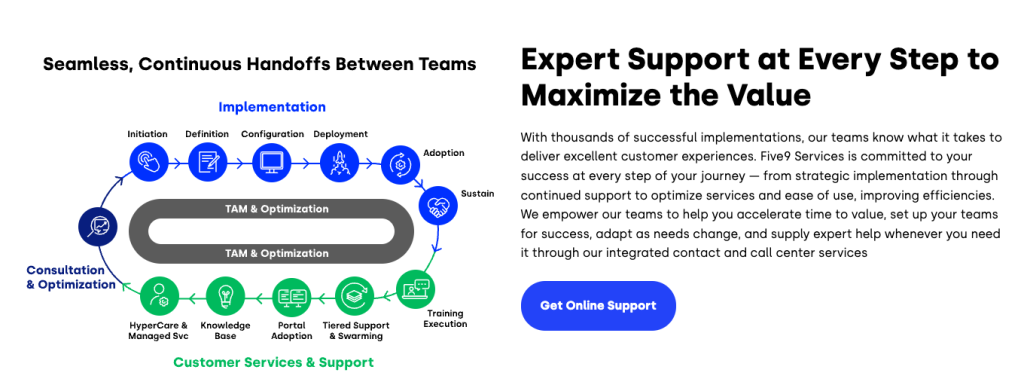
Image source: five9.com
Five9 is a cloud-based solution that supports real-time data analytics, flexible scheduling, and shift bidding. It helps ensure that agents are optimally assigned. The platform is user-friendly, helping improve agent productivity.
💰 Pricing: Plans start from $175 per user per month
Assembled
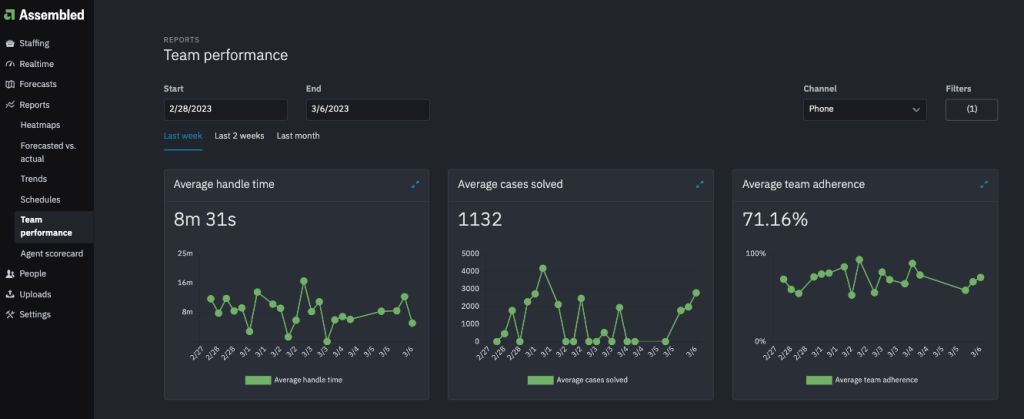
Image source: assebled.navattic.com
Assembled offers access to real-time dashboard views, scalable scheduling, and short-term scheduling. It helps teams stay on track and manage their schedules efficiently, contributing to improved performance and customer satisfaction.
💰 Pricing: Custom pricing based on company size
Alvaria Workforce

Image source: nh4osotdanwob39y5u.alvaria.com
Formerly known as Aspect Workforce Management, Alvaria Workforce specializes in optimizing workforce processes. It helps improve call center services through effective planning, scheduling, and real-time agent tracking.
💰 Pricing: Available upon request
Genesys Cloud CX
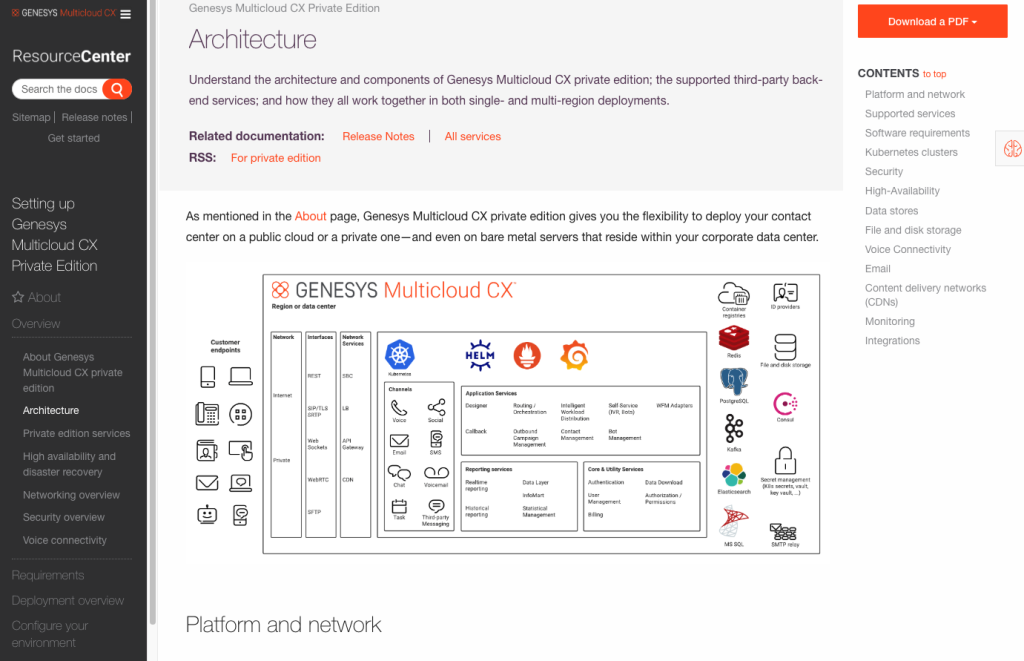
Image source: all.docs.genesys.com
Genesys Cloud CX offers a holistic approach to workforce management. It boasts features like inbound and outbound routing, customer self-service options, and workforce engagement tools. It supports multiple digital channels and includes AI-driven analytics.
💰 Pricing: Plans start from $75 per user per month
Call center workforce management is an art
Balancing the satisfaction of both agents and customers requires strategic finesse and emotional intelligence. Happy agents are more likely to deliver exceptional service, which leads to happier customers.
Managers must prioritize their agents’ well-being alongside customer satisfaction. They should employ flexible scheduling to reduce burnout, facilitate training programs, and offer occasional rewards for a job well done.
Related articles
25 Customer touchpoints: How to identify them and why they’re important
Customer touchpoints have the potential to turn a le...
What we learned building a SaaS go-to-market strategy (11 steps)
A strong go-to-market strategy is key to successful ...
How to create a knowledge base that drives results in 7 steps
Who doesn't want happier customers? Streamline your ...
Text messaging for accounting firms: Enhance client communication
Accounting firms deal with customers in all shapes a...
What is SMS OTP (One-Time Passcode) verification?
As more and more businesses nowadays increasingly mo...




